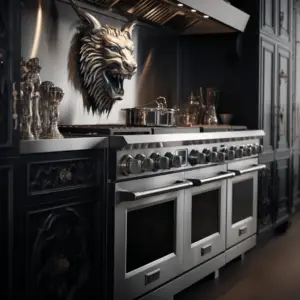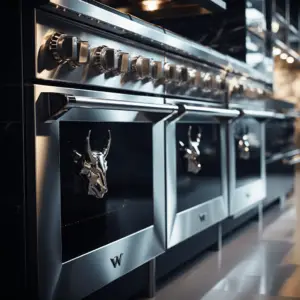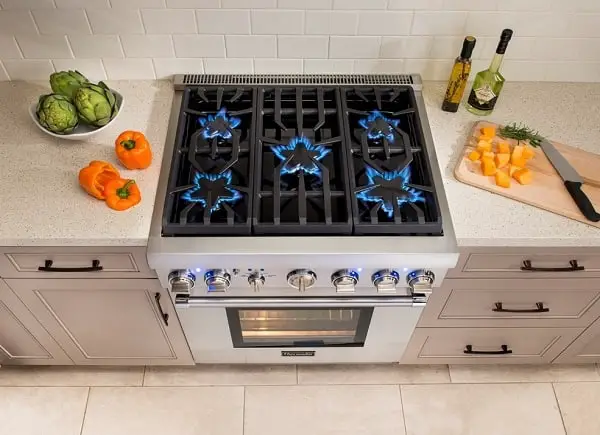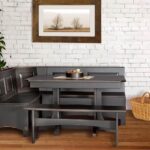Are you having a tough time setting up the range top of your modern kitchen? Thermador has a star design and extra-low settings that offer a wide range of temperature controls.
The home equipment also has reliable brass burners that have greater durability than Wolf’s aluminum.
Wolf has the reputation of a better warranty and the ability to be tough. Viking has a three-year warranty compared to the two-year warranty of Wolf.
Thermador has the 1× 22,000 BTU power burner while the Viking, on the other hand, has the BTU power of 3×23,000.
Thermador compensates for the small power by providing a 5× 18000 BTU burner which is much better than the 2×15,000 BTU burners of the Viking.
With good judgment, both Thermador and Viking tend to be more powerful than the other norms like Wolf circulating in the industry.
Table of Contents
Wolf vs Viking

Wolf brand appliances have heavier components and a stainless steel finish. The BTU power has extensive ranges for proper cooking, even for the chef who needs extreme temperatures.
When you buy Wolf, you will be offered a two-year warranty. If the appliance malfunctions or works inappropriately, you can return it to the company for a replacement with another piece or money refund, depending on the policies.
Viking brand appliance is available in 23 different colors, and each item has a stainless steel finish like the Wolf. The wide range appliances from Viking have a warranty of up to three years which is one year more than that of Wolf.
Therefore, the difference between Wolf and Viking is the quality. Wolf does different and mighty things when it comes to cast-iron framing. The other brands like Viking and Thermador use the stamped steel.
Cast Iron is used to make Wolf a durable product that can withstand shipping and moving rigors. According to research studies, cast iron has been noted to last for between 20 and 22 years.
Viking and Thermador
As a result, the cast-iron Wolf tends to last longer than the Viking and Thermador.
Unfortunately, Wolf is heavier because of the same material. Therefore, when you’re ordering Wolf, be sure to check on the salesperson, and if you have an older home, look for a technician or the installer to set up the floor joint to support the excessive weight of Wolf.
The BTU output is another advantage for Wolf burners. Viking’s burners release 1,000 to 15,000 BTU for gas ranges while Wolf’s burners produce between 500 and 16,000 BTU.
The BTU output is important because when you operate with an appliance that works well even at extreme temperatures, you’re able to appreciate extra controls.
Viking has good finishes like Cobalt Blue and Mint Jet, with more designs than Wolf. The 24-inch wide Viking model makes it possible for you to have the professional-style range even if the kitchen is small.
Another neat option from Viking that is not available in Wolf is the self-cleaning gas range. The feature is for chefs who prefer cooking with dual fuel or gas to electricity but still want to enjoy self-cleaning properties.
The price of Wolf and Viking varies from one region and retailer to another.
However, when comparing the cost of the two, you will note that Wolf and Viking sell a few hundred dollars between each other.
Notably, Viking’s money won’t offer you the official trademark like Wolf, which is considered the status symbol in many circles.
The Viking vs. Thermador companies
Viking and Thermador have always been the market leaders when it comes to the selection of luxuries and high-end range appliances.
The two companies are somehow similar, except that Viking has a new range and some great features.
Thermador was founded in 1916 by William Cranston, who worked on manufacturing the electric built and portable heaters.
Thermador introduced the first stainless steel cooktop and wall oven in 1947. Currently, Thermador range is part of the reliable home appliance.
Viking came into existence in the 1970s after Fred Carl JR created it. Mr. Fred dreamt of manufacturing a professional range that had not been created ever before for his kitchen.
Viking is a luxurious appliance like Thermador, and it’s well represented in the culinary atmosphere of food and wine.
Recently, the largest commercial food processing equipment manufacturers in the world, Middleby Corporation, purchased Viking.
Thermador has a star burner that doesn’t offer good pan coverage. Viking has a chrome griddle burner composition that is slow in heating, but it can retain more heat than the titanium griddled Thermador.
The Thermador titanium grill is easier to clean than the Viking chrome griddle

Viking and Thermador have electric conversion and self-cleaning ovens. However, the main oven of Thermador measures 5.1 cubic feet while the Viking’s oven is at 4.7 cubic feet.
The smaller oven of Viking is 2.6 cubic feet, while the Thermador smaller oven is 1.4 cubic feet.
The major difference also set in for the ovens since the Thermador smaller oven is the steam convection oven while the Viking smaller oven is the electric convection oven.
The steam convection oven of Thermador has a separate glass surface that warms the drawer—having both the warming drawer and steam oven gives you greater flexibility to carry out a ton of cooking options within the same range.
Conclusion: Should You Go For Wolf, Viking, Or Thermador?
Thermador has the newest range with the most innovative BTU burner at 22,000 plus timer, clock, and the great simmer brought down to 100 BTU.
The most interesting feature of Thermador is the combination of the warming drawer and the steam oven.
Steam is great for cooking since it doesn’t bake out the nutrients. The warming drawer is suitable for refreshing the leftovers or maintaining food in a healthy and edible state for hours.
Thermador has rebate programs in that the promotion comes with a new dishwasher and hood.
Wolf has unique configurations of the top and an excellent oven system. The Wolf’s top is made like the French tops, but the BTU output for the burner is 15,000.
The simmer burner is good at 500 BTU. The three-stage burner of Wolf makes the simmer consistent, while the Thermador might turn on and off when at lower temperatures.
Wolf has an independent ignition system making it less prone to issues related to one master ignition.
Viking has upgraded BTU burners at 18,000 plus the very innovative digital controls. Viking offers a warranty of up to 3 years.
Finally, choose the greatest range based on their area of competency and what you need: Thermador has low simmer and titanium griddled burners, Wolf has the Oven, and Viking has the digital controls plus warranty. Which is your favorite?


